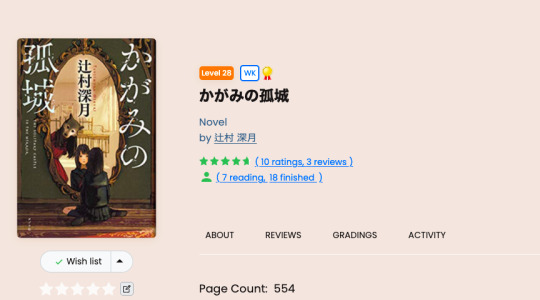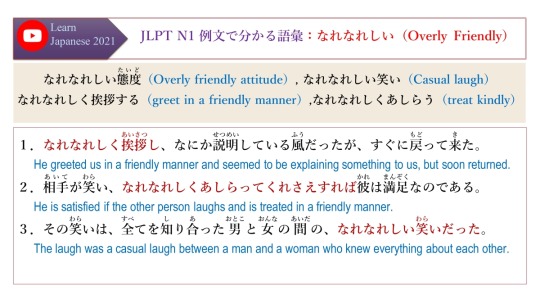#n1 vocabulary
Text
身の回りにある金属
銀(ぎん)silver (Ag)

アルミニウム aluminum (Al)

金(きん)gold (Au)

銅(どう)copper (Cu)

鉄(てつ)iron (Fe)

水銀(すいぎん)mercury (Hg)

ニッケル nickel (Ni)

鉛(なまり)lead (Pb)

プラチナ・白金(はっきん)platinum (Pt)

錫(すず)tin (Sn)

チタン titanium (Ti)

#語彙リスト#japanese langblr#langblr#studyblr#study motivation#learning japanese#study japanese#japanese studyblr#japanese studyspo#japanese vocabulary#vocabulary list#japan#japanese#japanese language#日本語#日本語の勉強#jlpt n2#jlpt n1#study blog#studyspo#study aesthetic#metal
182 notes
·
View notes
Text
• 披露宴 「ひろうえん」 - reception (e.g. wedding), banquet, celebration, party
• 露呈 「ろてい」 - exposure, disclosure
• 露見, 露顕 「ろけん」 - discovery (of a plot, misdeed, etc.), detection, exposure, disclosure
• 露骨 「ろこつ」 - 1. open, unconcealed, undisguised, blatant, plain, frank 2. broad, lewd, indecent, crude
• 暴露 「ばくろ」 - disclosure, exposure, revelation
• 露 「つゆ」 - 1. dew2. tears
• 披露 「ひろう」 - announcement, presentation, demonstration, displaying, showing, introducing, exhibiting, unveiling, revealing, showcasing, performing, giving a rendition
• 露店 「ろてん」 - street stall, stand, booth
• 露出 「ろしゅつ」 - exposure, laying bare, baring (e.g. skin)
#japanese#langblr#japanese vocabulary#language blog#kanji#japanese kanji study by chase colburn#step-by-step kanji#japanese language#japanese vocab#jlpt n1
59 notes
·
View notes
Text
Let's Learn Natively (TL :Japanese) | Reading
Why it's important to read as much native materials as you possibly can in your target language and where/how to start.
※ When learners first embark on their journey of picking up a new language, the first thing we do is familiarize ourselves with the alphabet, pronunciation, and other important innerworkings on the language. With Japanese, the first step is to learn hiragana and katakana. A lot of people stop in the middle of that because they feel that it's not worth learning the language if they have to learn that many letters. But what if you've made it past that point? Where do you go from there? Of course, we move on to basic grammar and sentence structure so that you can begin to understand why sentences are formed the way that they are. (and, of course, vocab words).
※ However, while textbooks and workbooks do teach us the way that sentences are formed, it's stiff. Of course, the purpose behind that is to make sure that you understand the basics before you move on to more native/nuanced versions of the structures. But once you're ready to do that, where do you go? Click below to keep reading:
★If you're ready/interested in reading native material, and you don't know where to start, I highly recommend trying out Natively. Think of this as a goodreads for Japanese learners.
★If you're concerned about picking a book or series that's too difficult or too long for you, the website has already taken that into account. The website is structured so that all of the books and series that are on there are added, graded, and reviewed by fellow Japanese learners. The grading system that is utilized goes from Level 0 to Level 41; the grades roughly correspond with JLPT levels (if you're preparing for the JLPT and are trying to prepare for the reading comprehension section). You can learn more about the grading system by clicking here.
★The website includes all sorts of books: textbooks, graded readers, light novels, manga, novels, children's books, short stories, and other kinds of books. When you click on a title or see it in the search results, the color coded grade will pop up next to it. These grades are user-determined. When users finish reading a book, we're prompted to grade the difficulty level in comparison to other books that we may have already read. In doing so, the difficulty level of the book might change when calculated in with other reviews. The point of this is to help fellow learners gauge what types of reads you find find difficult and which ones you find to be easy. Here's an example photo:

☞Caveat: don't feel discouraged if you found a book to be difficult even though it didn't seem like it would be. Everyone thrives in different areas and different subjects. Just because something was graded at N5 and you had difficulties with it at N3 doesn't mean anything--it might mean that it wasn't something to your liking. There are some series that I have difficulty with because of pacing or because I lacked interest in it.
❀ If you're worried about reading a book or series on your own and you're looking for friends to read and discuss about it with, come join us over on the discord and propose it as an option in the bookclub.
㉄ Can't find a particular book or series that you're looking for on the website? You can request for it to be added here.
★ The website is also equipped to let you "organize" your library into categories and track your reading progress. Additionally, you can make your library and reading progress private if you don't want anyone to see. As I'm currently using this blog to be as open as I can possibly be on my language learning journey, mine is made public. Feel free to check me out on the website.
★This is not sponsored, but if you receive a welcome message from Brandon, the owner and creator of the website, tell him that maobuchou sent you (that's me! ☺️). Brandon is really nice, so if there's anything that you're confused about or if you have suggestions for the website, he has an option for you to contact him.
★If you're interested in seeing what I'm currently reading, what I'm interested in reading next, and what I've graded thus far, click here to follow me (I'll follow back). Following other users allows you take a peek at what books they're reading. I also update my profile to say what book is also being read in the discord bookclub.
There will be more posts to come in the future about ways to become comfortable with reading in your target language.
#onigiristudies#japanese#learn japanese#nihongo#jlpt#resources#natively#jlpt n3#jlpt n2#jlpt n4#jlpt n1#jlpt n5#japanese grammar#japanese vocab#japanese langblr#learning japanese#langblog#japanese vocabulary#japanese studyblr
460 notes
·
View notes
Text
JLPT N1 Lesson 6-2 Grammar「5N1 といい、N2 といい」【日本語能力試験】
#jlpt n1#jlpt#japanese#日本語#日本語能力試験#日本語レッスン#外国人技能実習生#日本語の練習#japanese language#learn japanese#study japanese#study languages#nihongo#online japanese#japanese teacher#japanese words#japanese lessons#語彙#japanese vocab#japanese vocabulary
16 notes
·
View notes
Text
Checklist for today since I have the whole day off and will have Tumblr open in the background while I work/study
Speaking homework
Listening homework
Lesson plan for tomorrow
Writing thing for midterms
Reading vocabulary
N2 prepping
Translation class reading
#it should be my last year so i should actually try my absolutely best#also i heard n1 is way harder than n2#and n2 is way harder than n3#you all knew i crammed n3 in 3 weeks#reading vocabulary is something that should be done but in the middle of the priority list#because the other things have deadlines that come sooner#if i do this right maybe i can check like half of this in today
4 notes
·
View notes
Text
JLPT N1 例文で分かる語彙:なれなれしい(Overly Friendly)
JLPT N1 例文で分かる語彙:なれなれしい(Overly Friendly)
なれなれしい態度(たいど)(Overly friendly attitude), なれなれしい笑い(Casual laugh)
なれなれしく挨拶する(greet in a friendly manner),なれなれしくあしらう(treat kindly)
1.なれなれしく挨拶(あいさつ)し、なにか説明(せつめい)している風(ふう)だったが、すぐに戻(もど)って来(き)た。
He greeted us in a friendly manner and seemed to be explaining something to us, but soon returned.
2.相手(あいて)が笑(わら)い、なれなれしくあしらってくれさえすれば彼(かれ)は満足(まんぞく)なのである。
He is…

View On WordPress
0 notes
Text
im glad that for most of the time that i spend playing games in jp and learning and practicing, i dont have someone watching me. because you will not believe the amount of times i will have to look up a word after having already looked it up 4 times previous
#talk#me flushing red going to the jisho search bar after seeing ike or someone use 訓練 for the nth time: god dammit what is wrong with me#but its good though. the more often it happens the more bound i am to be determined to remember it for next time so i dont embarass myself#even more in the future#ive learned a few words this way. 訓練 kunren・training/drill/practice/discipline. 報告 houkoku・report/briefing. 情報 jyouhou・information#finally 見事 migoto which i shouldve had learned the first or second time i looked it up (means splended/excellent/etc)#oh 交換 koukan............................ that was embarrassing thats on the mini menu so often. means exchange/interchange/switching/barter#任務 ninmu・duty/function/mission/task#ill tell you what i get embarrassed at myself a little but i forgive myself pretty quick too and its always only fun in the end#and fire emblem has just been so fun too. theres so much reading to do so it feels overwhelming sometimes but#despite not fully grasping the particular delivery of whats being communicated due to not having a strong enough hold on some grammar#im getting by pretty smoothly and understanding what everyone is saying. its very fun#there are definitely characters who are more difficult to read than others. elencia uses very proper language#and sorens speech and diction are very formal too which is difficult and easier to read all at once#formal conjugation is really easy to parse because its all kind of more standardized. formal diction can have a fair amount of#n2 and n1 vocabulary and grammar though.. but he talks so much that im getting used to it#this post got so long in these tags. thanks for yall who got up this far hehe
1 note
·
View note
Text
I passed N2 btw lmao
#but kinda barely because i got EXACTLY 30/60 from reading section so if i had one less point i would fail the entire exam lmao#but i passed it lmao#then i got 40/60 from vocabulary/grammar and 41/60 from listening#so i had 111/180 points#so not exactly a spectacular result but i passed nevertheless lmao#now it's time to prepare for N1 next year lmao#jlpt
0 notes
Text
Podcast Review: Let's Talk in Japanese

Podcast Title: Let's Talk in Japanese!
Ease of Listening: ★★★★★
Length of Episodes: ★★★★★
Level of Engagement: ★★★★★
Episode Frequency: ★★★★★
Overall: ★★★★★
Today I will be reviewing the Let's Talk in Japanese! podcast by Tomo-sensei. This podcast is aimed at Japanese learners who want more chances to listen to spoken Japanese but using vocabulary and grammar that they can understand. The podcast is for levels N1 (the highest level) to N5 (the lowest level), but I would say that a majority of the content is focused on level N3 or N4.
Do I currently listen to this podcast?: Yes, I like this podcast a lot and listen to it frequently.
General Overview
Good For Levels: Beginner | Intermediate | Advanced
In this series, Tomo, a Japanese teacher for foreign students, discusses in Japanese only a variety of topics either selected by him or suggested by the audience. These can range from topics about daily life to JLPT related topics. He understandably discusses topics that he has a decent knowledge of, and admits when there are gaps. He is quite faithful to the level of each episode, which he indicates at the end of the episode title, so you can be sure that you will be able to understand the majority of the content or challenge yourself as the case may be.
Length of Episodes ★★★★★
The podcasts are usually around 10-15 minutes long. This is ideal for a quick listen when you are short on time or just want to supplement your studies, but may not be ideal if you are looking for something a bit longer. I usually listen to two or three podcasts in a row during my commute and feel like I've spent my time well. The short length can be useful if you are not interested in a particular topic, because you can make it to the end of the episode without losing interest and a new topic will come up with the next episode.
Level of Engagement ★★★★★
Although this is just one person (Tomo) talking throughout the podcast, he is engaging because he speaks as though he is talking to a small group. I find it engaging because I can, in the privacy of my room or car, reply to him when he poses questions, or make a response if I am surprised by what he says, etc. Even though it's not interactive per se, it can feel interactive because of the way he speaks in his podcast. I find myself engaged in most episodes, and the shorter length means I don't have to work as hard to stay engaged through the entire episode.
Episode Frequency ★★★★★
New podcasts come out about weekly, and sometimes more frequently than that. I have heard that he works very hard to put out the podcasts so frequently, and I think this intense schedule plus the large archive of material means you can listen almost indefinitely to this podcast.
Overall ★★★★★
This podcast is completely in Japanese and designed by a Japanese teacher for foreigners learning Japanese, and has material for everyone from beginners to advanced learners. The shorter episodes mean you can fit it into a busy schedule, and the JLPT labels mean you can pick and choose episodes based on your own level and be confident that you will get what you expect. I highly recommend this for those looking to improve their listening skills.
#日本語#japanese language#japanese langblr#japanese studyblr#langblr#studyblr#japanese podcast#podcast review#tokidokitokyo
151 notes
·
View notes
Note
How long have you been learning Japanese and what made you start? ⍤

Compiling these two asks, I hope you don't mind 🐑
I started learning japanese over 15 years ago. It was my major in undergrad and grad school. I can't pinpoint one specific thing that got me interested. I've always liked languages and how they sound. I've especially liked asian languages because they're so diverse. European languages maybe haven't fascinated me as much because a lot of them are related to each other in some capacity and I'm already a native speaker of one of the ones that isn't. I did have a very intense visual kei fan phase as a teenager, but it was over by the time I entered university. I feel like I got into visual kei because I liked the sound of the japanese language so much, not the other way around.
Fluency depends on your interpretation of it. I started being able to understand Japanese TV shows with ease during my second year of studies. By third year I was reading online news daily. After my third year I entered a japanese university and attended various academic classes with native speakers. I also passed N1 of jlpt while there but I probably could've done it even earlier since i only missed a few points. When I first got to japan after three years of studying, i was able to read and understand pretty much everything around me. I hadn't had much speaking practice outside of class so I spoke quite slowly at first, but my speaking skills improved really quickly after getting to Japan since i already had the vocabulary, I just needed to activate it. I also started dating a monolingual japanese person which probably helped a lot. It's a constant learning process, but over the past 15 years I've become pretty proficient I'd say.
10 notes
·
View notes
Text
My JLPT N1 Study Method (& Plan)
9/25/2023
As my introduction said, I'm trying to pass N1 by the next JLPT exam which is in this December! In this post, I will share how I study or prepare for N1
Books I Bought
Nihongo Sou Matome Vocabulary N1
TRY! 日本語能力試験N1
GO! JLPT N1 Grammar(Translated from Shin Kanzen Master i hate the renaming sm)

They are translated into Thai.
If you want to improve your Japanese understanding, people might recommend buying the Japanese version when you are at an intermediate level. But personally, I can completely understand it better when it's explained in my mother tongue, hence the reason why I bought them (plus I'm broke)
I bought them 2 months ago!
I start with TRY! and Sou Matome by reading the vocabs first from Sou Matome, then move on to TRY! doing their exercise as much as my brain can handle, usually not over a chapter.
Here's what my notebook looks like

As you can see, nothing fancy– just a pencil and a sticky note.
I write words I don't or barely understand at the top of every page. As for the sticky note, it's for the words from the seventh day of Sou Matome that I can't remember their meanings. You might notice I didn't write their meanings. It's because I want to challenge myself to recall their meanings without relying on written translations.
I also READ the TRY! book in advance, so I'm always ahead of my actual exercise. Why you may ask? It came from when I read the N4 book. I always carried it everywhere because reading it was fun! So I'm trying to keep up this habit (despite taking more effort than before). When I read sample sentences, I try to translate them into Thai by myself before looking at the translations, because I want to practice my interpretation/translation skills too! (It'll definitely be useful in the future).
After finishing TRY! I will start reading GO! JLPT. Hopefully, I can finish this before the exam date.
OH! One thing I forgot to mention, I haven't done the listening exercises in TRY!. The reason is simple, it's a bit of a hassle to use a DVD player so I want to do them altogether when I am done reading GO! JLPT.
I use Kanji Study (Play Store only) for studying Kanji. Right now, I'm studying secondary 3's kanjis. Believe it or not, it has been a year since I started learning secondary 3 and never managed to make progress.
Future Plans
There can be a rare case where I finish these books earlier than I expect so here's what I should do (by that, I mean you definitely should because god those books don't cover the skill adequately)
日本語能力試験 対策問題&必点整理 読解 N1
This book is incredible imo, because it explains the answers to every question which made me thoroughly understand it when I was studying for N2
Shin Kanzen Master 聴解 N1
These will be the books I borrow from my university's library. They are in Japanese too that's why I love borrowing from here! I think the CD resource can be found online because that's what I did for N2.
Lastly, if there is still time I'll take a mock exam from the official JLPT handbook.
AAAA Thank you for reading again. I will try to use this blog for archiving my knowledge and stuff like this more. See you in the next post!
4 notes
·
View notes
Text
小説の語彙力(1)

名詞 // Nouns:
基調(きちょう)basic tone, basic theme
後年(こうねん)in (one's) later years
権現(ごんげ)incarnation
酸味(さんみ)sourness, sour taste
駄洒落(だじゃれ)bad joke
店内装飾(てんないそうしょく)in-store decoration
末裔(まつえ)descendant
装い(よそおい)outfit
動詞 // Verbs:
あやす soothe, comfort, humor
利かせる(きかせる)season (e.g. with salt), bring out, use
渋る(しぶる)be reluctant, be unwilling, balk
なつく become emotionally attached
放る(ほうる)neglect, abandon, leave alone
形容詞 // Adjectives:
渋い(しぶい)bitter, sour, harsh, grim
その他 // Other:
後々(のちのち)later
機転が利く(きてん が きく)be quick-witted
散々(さんざん)severely, harshly
駄々をこねる(だだ)throw a tantrum
#小説の語彙力#語彙リスト#japanese langblr#langblr#language blog#learning japanese#language learning#study japanese#japanese vocabulary#japan#japanese#japanese language#study notes#japanese studyblr#vocabulary#vocabulary list#日本語#日本語の勉強#nihongo#jlpt n1
86 notes
·
View notes
Text
• 自棄 「やけ」 - (usually kana only) (See 自棄になる) desperation, despair, self-abandonment
• 棄却 「ききゃく」 - rejection, dismissal, turning down, abandoning, renunciation
• 破棄 「はき」 - 1. tearing up and discarding (e.g. documents), disposal (e.g. weaponry), destruction 2. annulment, cancellation, abrogation, voiding, breaking (e.g. treaty) 3. reversal (of an original ruling)
• 放棄 「ほうき」 - abandonment, renunciation, resignation, abdication (responsibility, right)
• 棄権 「きけん」 - abstention (from voting), renunciation (of a right), withdrawal (from a contest)
• 廃棄 「はいき」 - 1. disposal, abandonment, scrapping, discarding, abolition 2. annulment, cancellation, abrogation, repeal
• 遺棄 「いき」 - abandonment, desertion
#japanese#langblr#japanese vocabulary#language blog#japanese kanji study by chase colburn#step-by-step kanji#japanese language#japanese vocab#jlpt n1#kanji
51 notes
·
View notes
Text
JLPT N1 Lesson 6-1 Vocabulary「取り立てる、躓く、矯める」【日本語能力試験】
#jlpt n1#jlpt#japanese#日本語#日本語能力試験#日本語レッスン#外国人技能実習生#日本語の練習#japanese language#learn japanese#study japanese#study languages#nihongo#online japanese#japanese teacher#japanese words#japanese lessons#語彙#japanese vocab#japanese vocabulary
6 notes
·
View notes
Text
Studying Japanese? Pt 2
This is only my only personal opinion. It worked for me and I just wanted to share.
Create a goal within a time frame.
Ex: At the end of 2022, I have learnt 2000 kanjis.
I want to pass JLPT N3.
You need to know where you are. What level of Japanese proficiency are you on. Take any online tests, and it should tell you roughly which level are you on.
Learn what type of learner are you. Visual, auditory, tactile or a mix? What time of the day are you most energetic? At night? During the day? Early morning? You sacrifice something to learn a new language.
Buy an offline dictionary/ download an online dictionary.
For ios, I use Shirabe Jisho.
Find good textbooks online/ physical text books. I'm using Try! JLPT N1 with English notes. Gotta research to make sure your money is worth it. Refer here for a reddit thread on textbooks.
Find the time to study according your study method.
Divide the session to learn on kanjis, vocabulary, grammar and speaking/ pronunciation.
- For kanji, learn from a list. Use Kanji apps (refer here for some recommendations, remember to try and error because what works for everyone does not mean it will work for you). Find the meaning of the radicals. Search 'kanji + wanikani' to learn the mnemonics for the kanji. Use flashcard apps like Anki or create your own physical flashcards.
- For vocabulary, prepare a small book to compile your vocabularies in. Read short newspapers online, articles in Japanese that you may be interested in. Watch shows with Japanese subtitles (use this Language Reactor extension, so you can learn a new word straight away from the subtitle) or listen to podcasts, and list down new words each day. Draw three columns.
[ Word - meaning (in your native language) - example of a word ]
- For grammar, use your textbook. To get more detailed explanation regarding a grammar, type 'the grammar that you are learning + Maggie sensei/ JLPT sensei/文法' These sites will explain more in detail and provide you with example sentences.
- For speaking/ pronunciation/ listening, I use HelloTalk. I meet with people online to listen to them speaking. Just beware of disclosing personal informations online.
Discipline and consistency matters. No matter how shitty you feel/ how dumb you feel for not understanding something in Japanese-- Take only 5 minutes to learn for that day. Just 5 minutes. Continue if you feel like it, or just stop and continue your language study for the next day.
So this is it. I wish everyone of you all the best! Maybe you can make mastering Japanese as a New Year's resolution? It's never too late to start on something.
#learn japanese#learning kanji#study tips#studying#japanese#japanese langblr#japanese language#studying japanese
15 notes
·
View notes
Text
JLPT N1 例文で分かる語彙:無邪気(Innocent)
JLPT N1 例文で分かる語彙:無邪気(Innocent)
無邪気(むじゃき)な笑顔(えがお)(Innocent smile)、無邪気(むじゃき)な子供(こども)(Innocent child)、無邪気(むじゃき)な信頼(しんらい)(Innocent trust), 無邪気(むじゃき)な顔(かお) (innocent-looking Face), 無邪気(むじゃき)な人(ひと) (innocent people)
1.親(おや)の心配(しんぱい)をよそに、子供(こども)たちは無邪気(むじゃき)に遊(あそ)んでいる。
Despite their parents’ concerns, the children are playing…

View On WordPress
1 note
·
View note